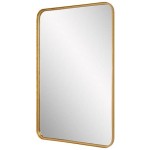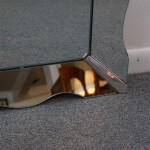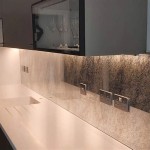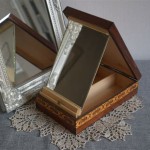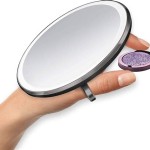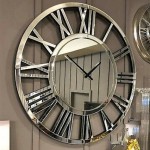Should Mirrors Be Hung Vertically Or Horizontally?
The orientation of a mirror, whether vertical or horizontal, significantly impacts a room's aesthetics and functionality. Choosing the right orientation involves considering the space's dimensions, the mirror's size and shape, and the desired visual effect. There's no single correct answer; the best choice depends on the specific context.
Reflecting Body Height: The Case for Vertical Mirrors
Vertical mirrors are the preferred choice for reflecting a full-length view of the body. This makes them highly practical in areas like bedrooms, hallways, and dressing rooms. A vertically hung mirror allows individuals to assess their overall appearance, from head to toe, making it ideal for checking outfits or ensuring a polished look before heading out. The height of the mirror should ideally be at least half the height of the tallest person who will regularly use it, ensuring a complete reflection.
Beyond functionality, vertical mirrors can also create an illusion of height within a room. By reflecting the vertical lines of the walls and furnishings, they visually extend the space upwards, making low ceilings appear higher. This can be particularly useful in compact rooms or spaces with limited vertical space. Narrow, vertically oriented mirrors can be strategically placed to amplify this effect without overwhelming the room.
Emphasizing Width and Creating a Sense of Space: Horizontal Mirrors
Horizontally hung mirrors offer a different set of advantages. They excel at creating a sense of width and spaciousness, particularly in narrower rooms or hallways. By reflecting the horizontal lines of the space, they visually expand the area, making it feel less confined. This can be beneficial in areas where maximizing perceived space is a priority.
Horizontal mirrors can also serve as a decorative element, complementing existing furniture and decor. Placed above a console table, fireplace mantel, or sideboard, a horizontally oriented mirror can anchor the space and create a focal point. The mirror's frame and shape can contribute to the overall aesthetic, adding character and style to the room.
Furthermore, horizontal mirrors can effectively reflect light, brightening a room and enhancing its ambiance. By strategically positioning a horizontal mirror across from a window or light source, natural light can be bounced around the space, creating a brighter and more inviting atmosphere. This can be especially advantageous in rooms with limited natural light.
Matching Mirror Orientation to Shape and Size: A Key Consideration
The size and shape of the mirror also play a crucial role in determining the optimal orientation. Large, rectangular mirrors can be hung either vertically or horizontally, offering flexibility in achieving the desired effect. However, the space available on the wall and the surrounding furniture should be considered. A large horizontal mirror might overwhelm a small wall, while a large vertical mirror might not be suitable for a narrow hallway.
Smaller, square or round mirrors can also be hung in either orientation, depending on the desired aesthetic. Square mirrors hung horizontally can create a sense of stability and balance, while round mirrors hung vertically can add a touch of elegance and sophistication. Ultimately, the choice depends on the overall design scheme and the desired impact.
For unusually shaped mirrors, such as arched or oval mirrors, the shape itself often dictates the most suitable orientation. An arched mirror, for example, typically looks best hung vertically to showcase its unique shape. Oval mirrors can work well in either orientation, but the surrounding decor and the desired visual effect should guide the decision.
In addition to shape and size, the frame of the mirror should also be considered. A heavily ornate frame might look best hung vertically to showcase its intricate details, while a simple, minimalist frame might work well in either orientation.
Ultimately, the decision of whether to hang a mirror vertically or horizontally depends on a multitude of factors. By carefully considering the space, the mirror's dimensions and shape, and the desired effect, one can make an informed decision that enhances both the functionality and aesthetics of the room.

Should Mirrors Be Hung Vertically Or Horizontally Solved My Interior Palace

Should Mirrors Be Hung Vertically Or Horizontally Solved My Interior Palace

Dining Room Update Vertical Vs Horizontal Buffet Mirror

Rectangular Wall Mirrors With Metal Frame For Entryway Melodieux

Horizontal And Vertical Mirror Neutypechic

Can Be Hung Vertically Or Horizontally Classic Style 28 In W X 20 H Aluminum Alloy Black Deco Mirror Yx 2028bk The Home Depot

Can Be Hung Vertically Or Horizontally Classic Style 28 In W X 20 H Aluminum Alloy Black Deco Mirror Yx 2028bk The Home Depot

Fab Glass And Mirror Large Rectangle Hooks 60 In H X 36 W Mrec36x60be6mm The Home Depot

Home Interior Mirrors Set Of 3 Can Be Hung Horizontally Or Vertically

Wood Mirror 24x32 Inch Farmhouse Rectangle Framed Wall For Bathroom Vanity Bedroom Living Room Hangs Vertical Or Horizontal Rustic Brown China Home S Made In Com

